Many businesses cannot delete their older data as they need to follow business industry compliances where the government can ask for a selected piece of information. That’s why the businesses want to take backup in such a format to access the selective information easily. You can export EDB file data to a PST with direct conversion through converter srge from C:\Program Files\Exchsrvroftware. Many recovery tools employ this strategy for recovering Exchange data. And Exchange has inbuilt facilities to export data to PST, though they vary in different versions.
Why EDB to PST export?
- Compliance requirements – Emails and other mailbox data can be exported to a PST file for legal and compliance related requirements
- For Mailbox backup – Backing up individual mailboxes as PST is easier than creating backups for the entire database (using backup utilities)
- For Mailbox recovery – Mailboxes can be recovered from corrupt EDB files by converting them to PST (third-party tools required)
3 different options to convert EDB to PST
The extraction mailboxes to PST from EDB can be done with Microsoft utilities. Here, we will discuss ExMerge, and EDB to PST conversion using and New-MailboxExportRequest cmdlet & EAC.
- ExMerge (mainly used to convert Exchange 2003 EDB to PST)
ExMerge (Microsoft Exchange Mailbox Merge Wizard) is no longer relevant (as it was a tool for the earlier versions of Exchange). However, it is with this tool the Exchange administrators learned the practical advantages of exporting mailboxes to PST. Microsoft provided this tool for free download, and Exchange administrators used it extensively. Here is how it helped them to export Exchange mailboxes to PST:
Note: Before starting, make sure you have downloaded ExMerge and configured it properly. Also, you must have the required permissions (Receive As/Send As) on the database. A service account is the best option to use ExMerge.
- Launch ExMerge from C:\Program Files\Exchsrvr\bin folder. Click Next on the Welcome screen.

- Choose Extract or Import (Two Step Procedure) in the Procedure Selection screen and click Next.

- In Two Step Procedure screen, select Step 1: Extract data from an Exchange Server Mailbox and click Next.

- Now in two step procedure, select either Step 1 or Step 2. Here, you need to select Step 1 : Extract data from an Exchange Server mailbox and click Next.

- Provide the login credentials and click Next in the Source Server screen. Select the required mailboxes in the Mailbox Selection screen and click Next.
- Click Change Folder button and choose the desired location (folder) where you wish to save the extracted PST files. Click OK. Then click Next.
- To save the current settings, click Save Settings (optional step). Click Next. The progress will be displayed on the Process Status screen. When it is complete, click Finish.

Now you can go back to the selected folder to view the PST files there. And these PST files can be accessed using MS Outlook.
- New-MailboxExportRequest
The newer versions of Exchange use Shell cmdlets to perform the PST export operation (of course, the latest versions have GUI option too). And the PST files can be exported to any network share folder Exchange has access to. Here is how you can do this in Exchange 2013 (any user assigned to Mailbox Import Export role can perform this action):
To export mailboxes to PST, execute the following cmdlets in Exchange Management Shell:
New-MailboxExportRequest -Mailbox <Mailbox Name> -FilePath “<PST file path>”
If you want to export an archive mailbox, use the same cmdlets with –IsArchive switch.
Note: If you are unable to connect to the PST file (with an error statement), verify that you have the required permissions to export to PST file.
- Using Exchange Admin Center (To export Exchange 2013/2016 mailboxes to PST)
For this method to perform, the user needs to create a shared folder. Also, the account you are using should Mailbox Import Export permissions.
To assign Export permission to mailbox, follow the steps:
- In Exchange admin center, click Permissions.
- Double click on Recipient Management and click Add.
- In Select a Role, click the Mailbox Import Export option, click Add and then click OK.
- Now, click Add (under Members).
- Then select the mailboxes that need to be assigned export permissions. Click Add. Click OK.
- Finally, click Save.
Now export Exchange EDB to PST using the steps:
- In EAC, go to recipients > mailboxes.
- Right-click and select Export to a PST file.
- Browse and select the mailbox to be exported.
- Provide the destination to save the mailbox data.
- Finally, click Finish once the process is completed.
Hence, the EDB file data is exported to PST file. It is now accessible in your Outlook.
Do you need to look beyond native options for exporting mailboxes to PST?
There are many occasions when administrators have to look beyond native options for converting EDB to PST. Though content filtering and multiple mailbox migration can be done with the Shell cmdlets, the procedure is not simple as in many professional Exchange server recovery tools. And when the Exchange database is corrupt, Exchange Server Recovery tool helps to convert EDB files to PST format so as to restore the inaccessible mailboxes. Moreover, accomplishing the export task from a friendly interface is preferred even by technically brilliant Exchange administrators.
Tool Process to Export Exchange Mailboxes to Outlook Data Files
- Install and launch the tool on your system. Click Offline EDB icon and click Next.
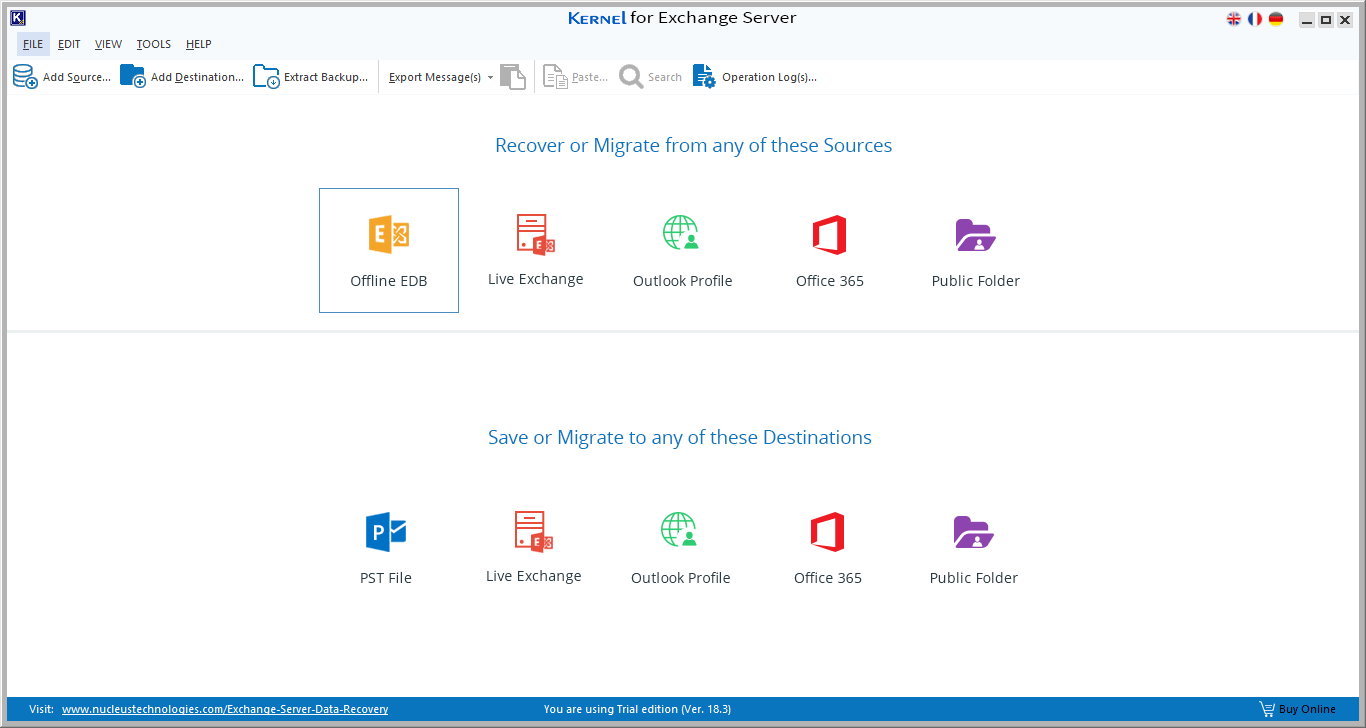
- On the home screen, select Offline EDB as the source and click Next.
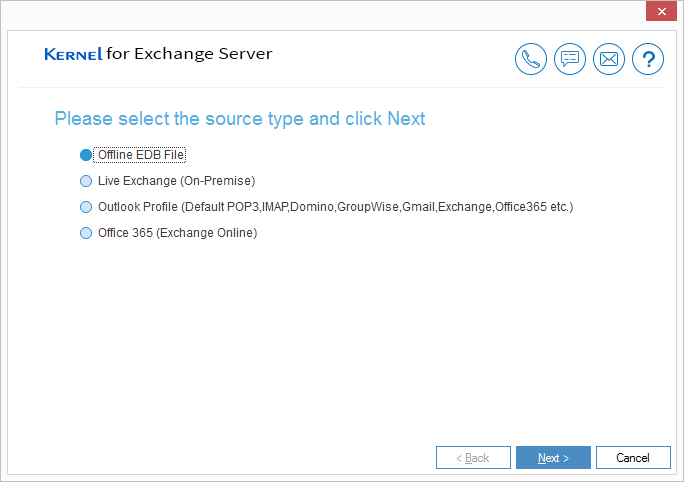
- Now, select the EDB file that you want to convert to PST with the browse button and click Next.
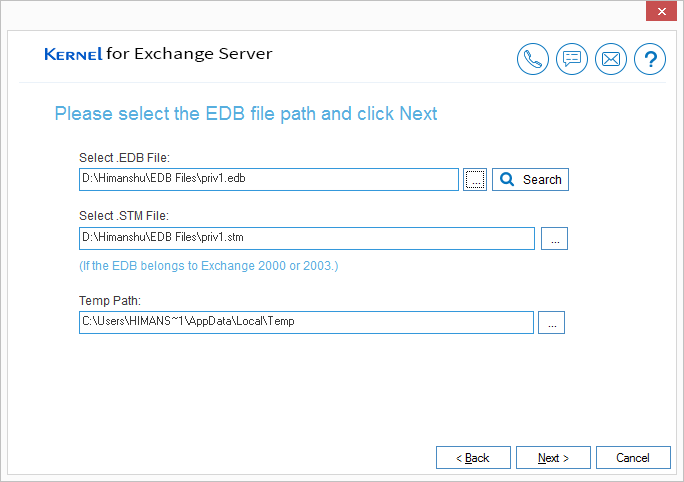
- Select the specific scanning mode to scan for the errors in EDB file and click Next.
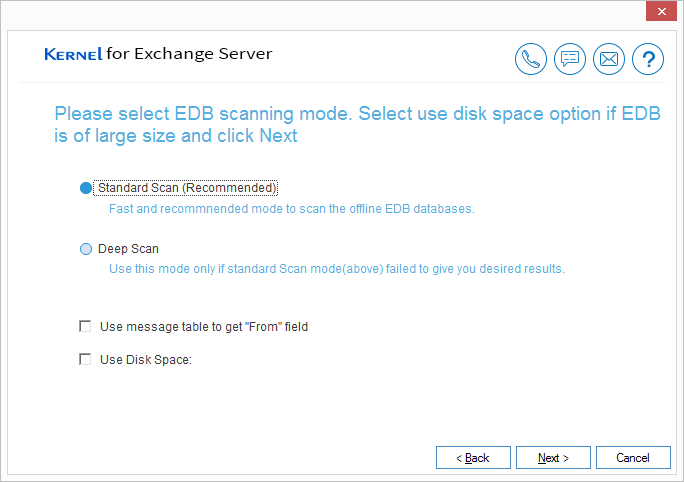
- After the EDB file is added to the tool, you can preview its mailboxes by clicking any folder. Now to convert EDB to PST, right-click on the root directory of added EDB file and select Export to PST.
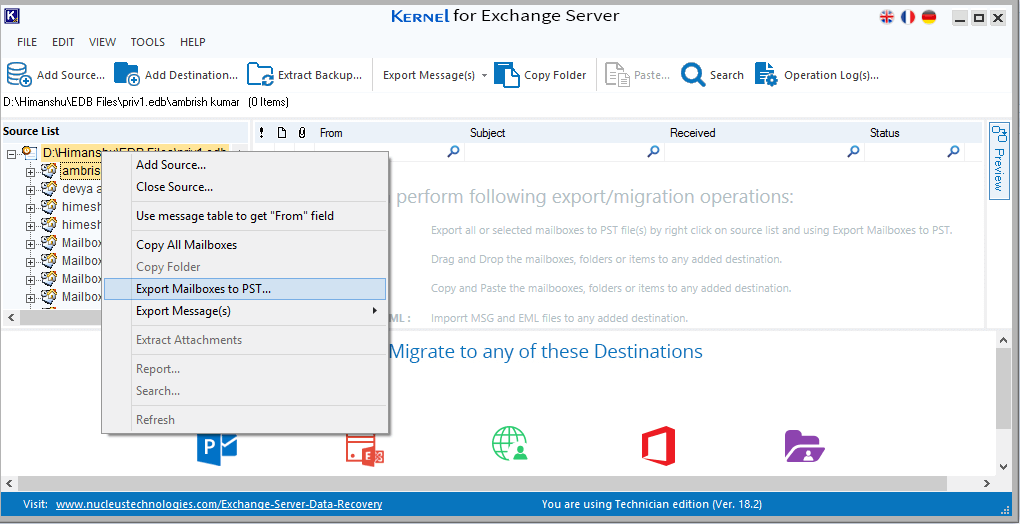
- All the EDB mailboxes will display on the screen, select the specific mailboxes as per your requirements, select a location to save PST file, and then click Export.
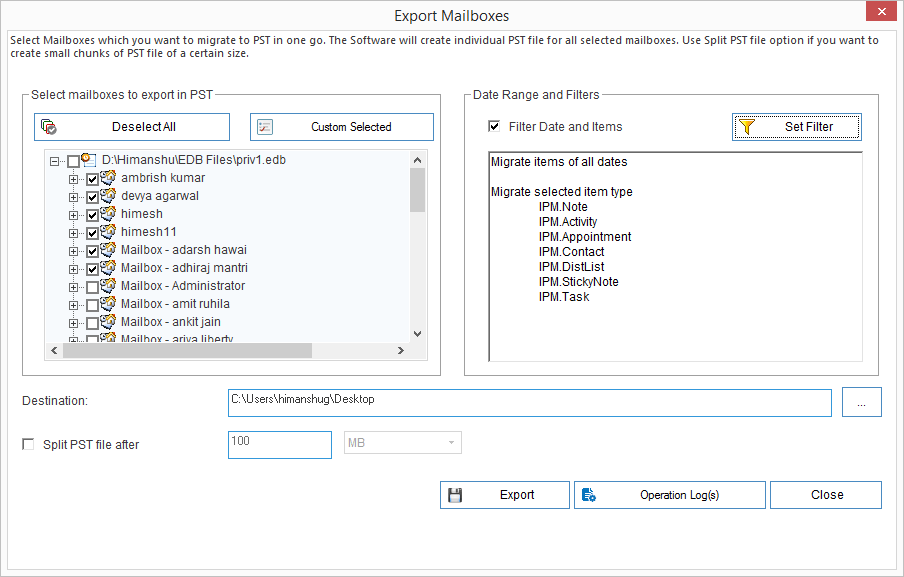
- The conversion process will start. Once it is complete, a notification will appear on the screen. Click OK to complete the conversion process.
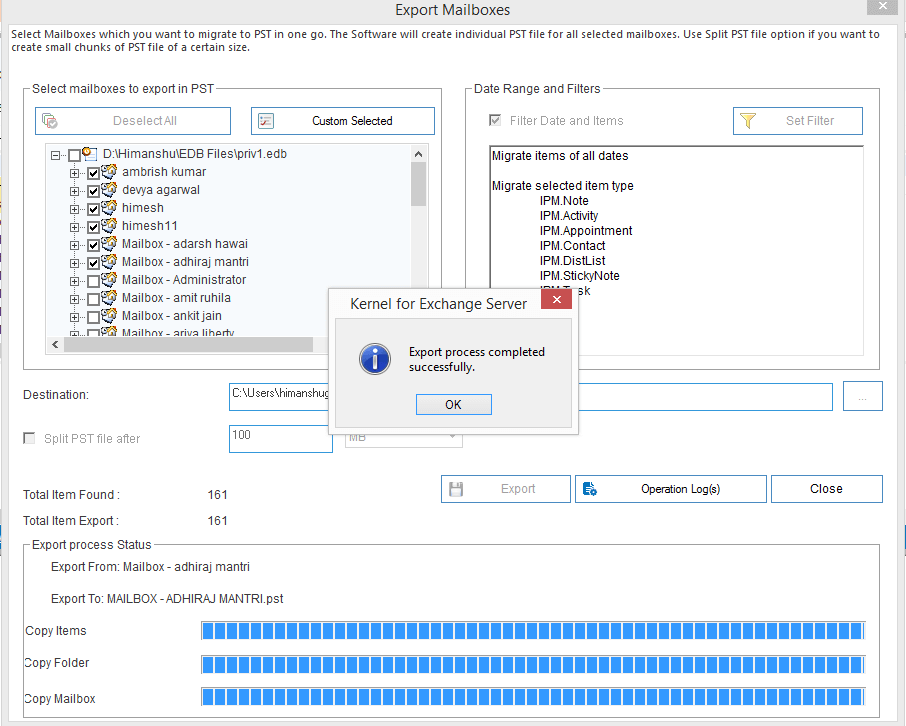
- A new wizard will appear on the screen displaying the mailboxes converted to PST. Click OK to end the process.
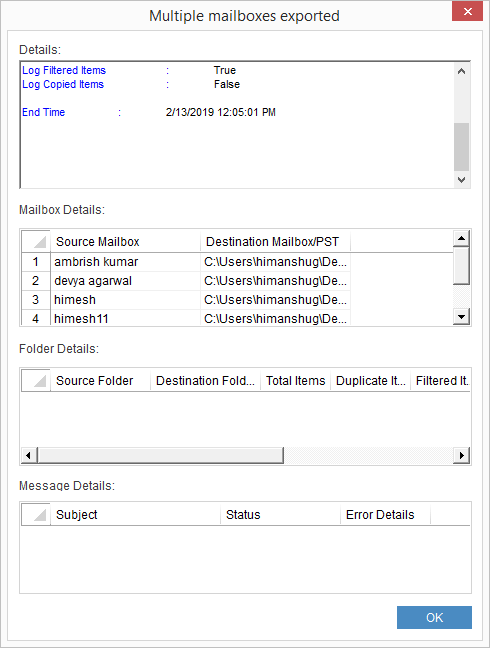
Note: You can search for EDB files if you don’t know their location.
Note: You can also convert EDB mailboxes based on date and item type by applying Filters to the mailboxes.
Conclusion:
Conversion from EDB to PST file is a straight-forward process with the help of Exchange Server Recovery software. The benefit of using the software is that it can recover data from a corrupt EDB file and convert it.

